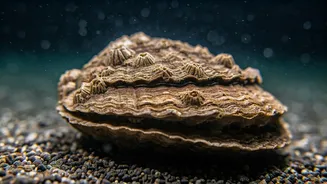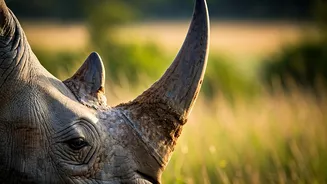Ocean Quahog's Endurance
The ocean quahog, scientifically known as Arctica islandica, holds the title of one of the longest-lived animals on Earth. These unassuming bivalves, residing
in the cold, deep waters of the North Atlantic Ocean, can live for over 500 years. Their shells, like tree rings, offer a record of their age, allowing scientists to study their life history and the environmental conditions they've experienced. These creatures have witnessed centuries of change, from the rise and fall of empires to the industrial revolution. Their long lifespans are attributed to slow metabolism and a relatively stable environment, which helps them escape the ravages of aging. The shells of these creatures have provided valuable data that assists in understanding climate change and ocean conditions from centuries ago.
Bowhead Whale's Legacy
The bowhead whale, a majestic creature of the Arctic and subarctic waters, is another champion of longevity. They can live for over 200 years, making them among the longest-lived mammals. Scientists have discovered that these whales have a unique genetic makeup, specifically a gene that helps repair damaged DNA and potentially protect them from cancer and other age-related diseases. The bowhead whales' sheer size and low metabolic rate contribute to their long lives. Moreover, their thick layer of blubber provides insulation against the frigid Arctic temperatures. Bowhead whales have been living through major environmental changes, and studying their resilience offers insights into conservation.
Greenland Shark's Secret
The Greenland shark, residing in the cold, deep waters of the Arctic and North Atlantic Oceans, is known for its incredibly long lifespan. Research estimates that these sharks can live for at least 272 years, and some may even reach 400 years old. This remarkable longevity is due to their slow growth rate and metabolism, and potentially, unique genetic adaptations. Their age is estimated using radiocarbon dating of their eye lenses, which is a method that has proven effective. Greenland sharks are slow swimmers, but their longevity allows them to thrive in their harsh environment. Studying these sharks can offer insights into aging and the impact of environmental changes on marine life.
Galápagos Tortoise's Journey
The Galápagos tortoise, native to the Galápagos Islands, is a terrestrial animal known for its impressive longevity. These tortoises can live for over 100 years, and some individuals have been documented to live for more than 150 years. Their long lifespan is influenced by a slow metabolism, their size and their protective shells. The Galápagos tortoises have adapted to their environment over millennia. They offer a unique window into evolution. Their conservation is also of utmost importance, with measures like habitat preservation and captive breeding programs to secure their future in their native habitats.
Rougheye Rockfish's Life
Rougheye rockfish, found in the North Pacific Ocean, has a lifespan that extends well beyond what is commonly seen in fish. These fish can live for more than 200 years. This longevity is supported by a slow metabolism and a stable deep-sea environment. The Rougheye rockfish is well-adapted to survive in its cold, dark habitat. Their long lifespans make them vulnerable to environmental changes and overfishing. Conservation efforts are crucial to protect their populations. Studying these fish has provided scientists with insights into aging processes, also contributing to our broader understanding of marine ecosystems.
Red Sea Urchin's Time
The red sea urchin, found in the Pacific Ocean, is a creature known for its extended lifespan, with some individuals living for over 100 years. Their long life is associated with the low levels of oxidative stress and high rates of DNA repair. These sea urchins don't show the typical signs of aging, such as reduced reproduction or increased susceptibility to disease. They have developed mechanisms to avoid common age-related decline. Their study offers insights into aging processes. Maintaining their habitats is essential for their survival, and it has implications for the overall health of marine environments.
Immortal Jellyfish's Tricks
The immortal jellyfish (Turritopsis dohrnii) has a unique trick up its sleeve: it can revert to its polyp stage, effectively regenerating itself and potentially living forever. This process, known as transdifferentiation, allows the jellyfish to bypass the normal aging process. The ability to revert to a juvenile state has fascinated scientists, offering insights into the mechanisms of aging and regeneration. While these jellyfish are small, their immortality offers a novel model for studying the biology of aging and the potential for regenerative medicine. This ability makes it a unique organism within the animal kingdom.






